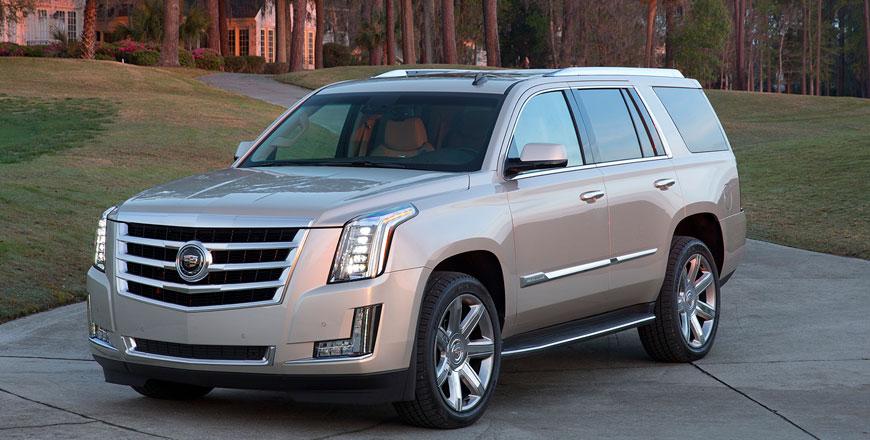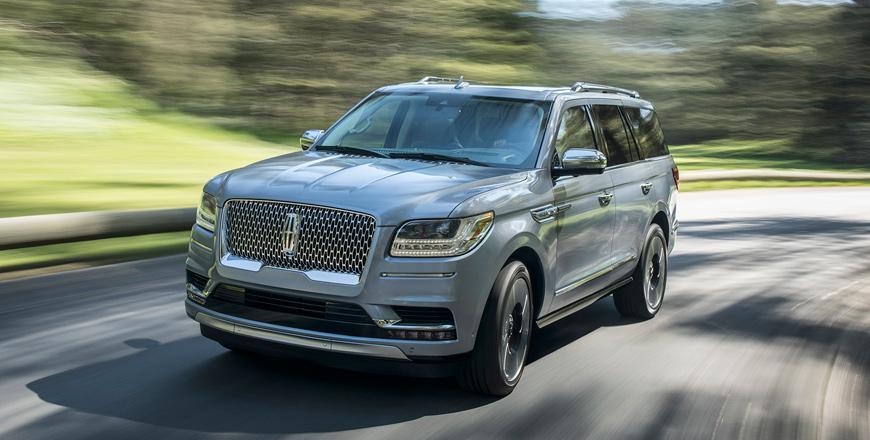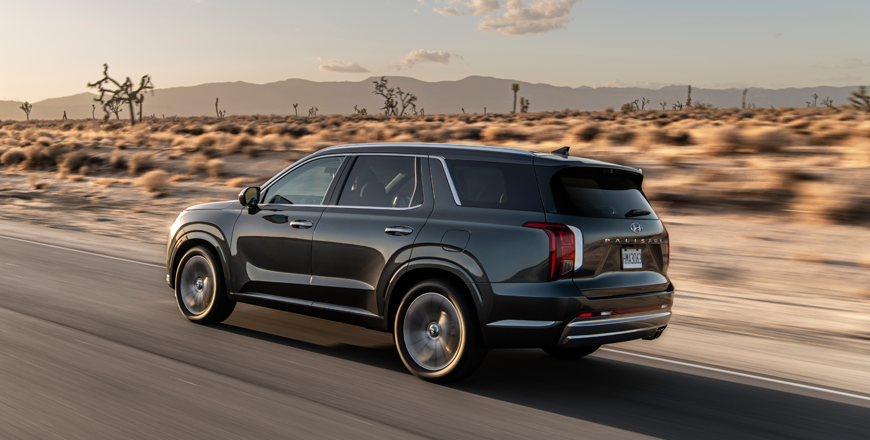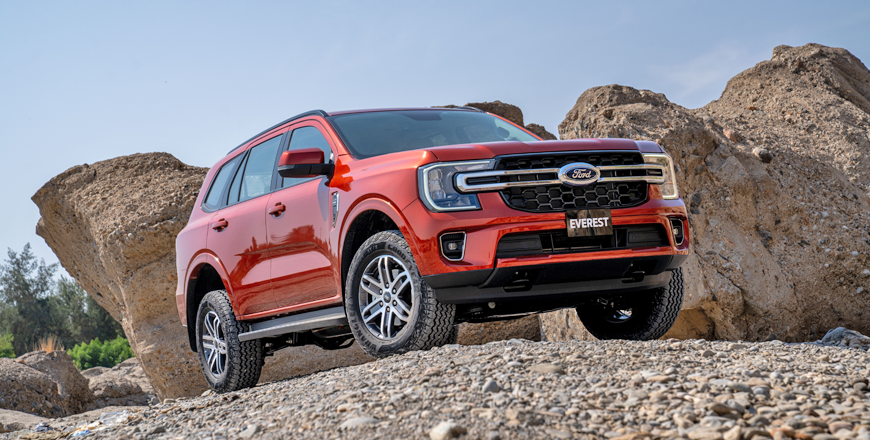You are here
Cadillac Escalade: The quintessential contemporary Cadillac
By Ghaith Madadha - Jul 04,2016 - Last updated at Jul 04,2016

Photo courtesy of Cadillac
First launched in 1999 and swiftly re-styled to convey the Cadillac’s then new and so-called “art and science” design ethos for 2002, the Escalade became the brand’s most recognisable model. One could further and argue that with Cadillac’s saloons taking a more downscaled European trajectory, the Escalade has arguably become the defining model in Cadillac’s portfolio.
Cadillac’s first foray into the burgeoning SUV market, the big, bold and brash Escalade soon became synonymous with excess and overt yet attainable luxury, regularly appearing in rap videos and featured as fictional gangster Tony Soprano’s vehicle on TV. Supplanting Cadillac’s quintessential luxury “land yachts” of long past, the latest generation Escalade is the most refined, luxurious and advanced yet.
Imposing impressions
Arriving as a 2015 model, the latest generation Escalade is the most stylised SUV expression of the brand’s contemporary design ethos, with sharper more prominent ridges and angles in its body surfacing. Tall, imposing and aggressive, the Escalade features a dominant chrome finished grille flanked and active grille shutters for improved aerodynamics, and is flanked by slim, stacked LED headlight clusters. Aluminium bonnet and tailgate panels, meanwhile, reduce overhang weight.
Reflecting Cadillac’s traditional rear light arrangements, the Escalade’s sharper new front headlights are joined by slim clear encased red rear LED lights flanking the tailgate and rising from bumper to roof. Wheel arches are somewhat squared and flanks little adorned apart from a prominent crease across the doors, while automatically lowered chrome-finished running boards make access to its high-set cabin easier without cluttering its design.
Big on bling and showmanship, the new Escalade features big badges, and more restrained use of chrome detailing for other than the grille and massive 22-inch alloy wheels. A more straight-cut shape in design, the Escalade features a higher waistline and lower roofline, both level for a maximum imposing visual effect.
Big and brisk
Compactly packaged and light aluminium built but large displacement, the Escalade’s traditional 16-valve OHV design naturally aspirated 6.2-litre V8 engine delivers abundant low- and mid-range torque and progressive power accumulation. Accompanied by a well-insulated but evocatively rumbling soundtrack, the Escalade develops 420BHP at 5600rpm and 460lb/ft at 4100rpm.
Squatting slightly as it digs all four wheels into tarmac, the enormous and hefty 2,649kg Escalade launches confidently off-the-line, accelerating to 97km/h from standstill in 6 seconds and is able attain 180km/h. A more traditional engine choice, the Escalade has a slight power advantage and torque disadvantage to its’ primary Lincoln Navigator rival’s 3.5-litre twin-turbo V6 engine, and to attain good in-class efficiency utilises an automatic cylinder de-activation system.
Driven through a 6-speed automatic gearbox — as tested — one can choose to channel the Escalade’s power to either all four-wheels for traction and grip, or to rear wheels for efficiency. Smooth shifting, the Escalade’s gearbox has been replaced by an 8-speed unit since test drive, which with more and better chosen and a more relaxed final drive, should provide improved off-the-line responses, mid-range versatility, highway refinement and improved efficiency.
Comfort and refinement
Built with a stiff 75 per cent high strength steel boxed frame, fully independent front suspension along with a five-link rear set-up and adaptive magnetic dampers, the Escalade’s refinement and body control is good for a body-on-chassis design with rear live axle. Smooth with damping and springing slightly on the soft side, the Escalade rides comfortably over imperfections and bumps — despite relatively low profile 285/45R22 tyres — and delivers adequate vertical rebound control.
Well refined from harshness, noise and vibrations inside the high, hefty and long Escalade maybe no agile sports SUV, but turns with compliant tidiness into corners with comfortably light steering ratio. With little by way of body lean for its height, the Escalade’s body control is due to adaptive dampers stiffening up when necessary, while through corners it feels balanced and predictable. On the highway, the Escalade is stable and reassuring.
Best driven in 4WD Auto mode where power primarily goes to the rear and is direct frontwards when necessary, the Escalade also features lockable 4WD, 205mm ground clearance and 15.7° approach and 23.1° departure angles. Designed as a luxury SUV with hauling and towing more in mind rather than off-roading, the Escalade can carry a 662kg payload and tow up to a whopping 3674kg.
Cavernous cabin
Noticeably improved in terms of design, materials, quality and finish, the new Escalade’s features more use of soft textures, better leathers and plastics and is better fitted for an overall upmarket ambiance. Seating is comfortable and well adjustable while convenience equipment levels are high and include hands-free power liftgate, tri-zone climate control and a standard 16-speaker audio system and infotainment system with voice recognition and many more features.
With its high waistline and level roofline, the Escalade’s smaller glasshouse lends the Escalade’s cabin a more hunkered down ambiance suited to its popular perception and the origins of its name, borrowed from mediaeval military terminology for scaling a high fortified position. Seating up to eight with middle bench or seven with optional middle captain’s seats, the Escalade trades away some advantages and disadvantages with the higher roofed Navigator, but is nevertheless vastly spacious inside for passengers and cargo.
Extensively well-equipped with luxury, convenience and safety equipment, the Escalade features stability and traction control, park assistance, rear view camera, tyre pressure monitoring and numerous airbags as standard. Optional high-tech driver assistance systems include lane departure, forward collision, rear cross-traffic blindspot, lane change alerts, and heads-up display adaptive cruise control, collision preparation and other features.
TECHNICAL SPECIFICATIONS
Engine: 6.2-litre, in-line V8 cylinders
Bore x Stroke: 103.25 x 92mm
Compression ratio: 11.5:1
Valve-train: 16-valve, OHV, variable valve timing, direct injection
Gearbox: 6-speed automatic, four-wheel drive
Gear ratios: 1st 4.03; 2nd 2.36; 3rd 1.53; 4th 1.15; 5th 0.85; 6th 0.67
Reverse/final drive ratios: 3.06/3.42
Power, BHP (PS) [kW]: 420 (425) [313] @5600rpm
Specific power: 68BHP/litre
Power-to-weight: 158.5BHP/tonne
Torque lb/ft (Nm): 460 (623) @4100rpm
Specific torque: 101Nm/litre
Torque-to-weight: 235Nm/tonne
Rev limit: 6,000rpm
0-97km/h: 6 seconds
Top speed: 180km/h
Fuel urban/extra-urban/combined: 18-/10.3-/13.1-litres/100km
Fuel capacity: 98 litres
Length: 5,179mm
Width: 2,044mm
Height: 1,889mm
Wheelbase: 2,946mm
Track, F/R: 1,745/1,744mm
Ground clearance: 205mm
Approach/departure angles: 15.7°/23.1°
Legroom, F/M/R: 1151/991/630mm
Shoulder room, F/M/R: 1648/1636/1590mm
Hip room, F/M/R: 1,547/1,529/1,252mm
Cargo volume, behind 3rd/2nd/1st row seats: 430-/1461-/2667 litres
Kerb weight: 2649kg
Weight distribution, F/R: 52/48 per cent
Gross vehicle weight rating: 3310kg
Payload: 662kg
Trailer towing: 3,674kg
Steering: Electric-assist rack & pinion
Turning circle: 11.9 metres
Lock-to-lock: 3.4 turns
Suspension F/R: MacPherson struts/five-link solid axle, adaptive magnetic dampers, anti-roll bars
Brake discs, F/R: Ventilated 330 x 30mm/345 x 20mm
Tyres: 285/45R22
Related Articles
With emphasis on high-end materials, refined, comfort and new technology, the latest Lincoln Navigator is a crucial part of redoubled effort
Launched in late 2019 as Hyundai’s big flagship SUV, the Palisade struck an assertive aesthetic tone combined with a capable engine, confide
A rugged but refined SUV with plenty of practicality and authentic off-road ability, the Ford Everest may be a well known quantity in Austra

















